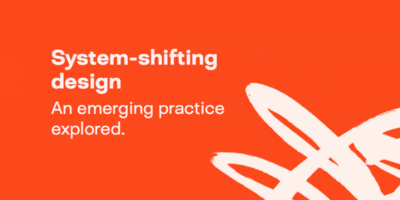Keeping Connected

Keeping Connected was a national design challenge that asked students to develop service design ideas to help older adults better connect to younger generations, their communities, families and each other. A partnership between the Design Council and Innovate UK (formerly Technology Strategy Board), the challenge ran from January to July 2011.
The problem
Fifteen schools from across the UK were selected to participate in the challenge. They were asked to address two questions:
- How do older adults (65+) connect to younger people, their community and the wider world?
- Can you design ways to keep them better connected?
To help tackle these questions, each school was matched with a Design Ambassador – an experienced practising designer, working in a voluntary capacity who mentored the pupils in design process and design thinking.
The insight
The project kicked off in March when teachers and Design Ambassadors met at the Design Council office in London to attend an Inspiration Day. The Inspiration Day was a valuable opportunity for teachers and designers to get to know each other, learn about issues related to the theme of keeping connected in an older adult population, as well as to find out about the Double Diamond design process and deepen their understanding of service design.
The participating schools ran the challenge in a number of different ways. Some schools ran the challenge solely during class time, while others ran it after school and during school holidays. The common thread that ran through all the schools was that they all worked with older adult research participants to help them develop their ideas.&
<figcaption class="asset-details">
A user-centred approach enabled the pupils to develop authentic and relevant service ideas based on actual insight and need, rather than guess work.
</figcaption>
Despite the fact that the challenge was predominantly run during design and technology classes, many of the schools’ service ideas were ‘low tech’ and encouraged actual, rather than digital, face-to-face communication in settings that were familiar to older adults. This highlighted how powerful the user-led approach was in the development of ideas.
The results
In June, all 15 schools submitted their service design ideas to be judged. Five schools were then shortlisted to attend the final event at the Design Museum on 7 July, with a chance to win £5,000 to help turn their ideas into realities.
<figcaption class="asset-details">
Students from the five schools skilfully pitched their ideas to a dragons' den of judges, which included representatives from the Design Museum, Technology Strategy Board and Design Council.
</figcaption>
After significant deliberation, the judges chose Stoke Newington School and Sixth Form's idea, Enrich, as the winner. Enrich brings older adults and young people together on the school premises to jointly take part in activities including cookery, dance, and gardening. The judges chose this idea as it seemed to genuinely embody the spirit of ‘keeping connected’. The idea taps into needs of the local community, is easily realisable and most importantly, keeps older adults better connected.
<figcaption class="asset-details">
The winning team from Stoke Newington School and Sixth Form with the Government’s Inclusive Design Champion, Michael Wolff, who was also a judge.
</figcaption>
The four runners-up were:
- Brainy Tech (Essa Academy, Bolton): Older adults come in to the classroom for IT lessons from school pupils. The focus is on on 'connecting' applications such as the internet, email and Skype.
- Strollin 'n Rollin (Farnham Heath End School, Farnham): Young people and older adults provide local social activities, such as community walks, bike rides or group trips to cafes.
- Conekt 2 u (Govan High School, Glasgow): A multi-purpose 'radio' that combines traditional design and new technology to enable older adults to access local services, phone books, diary, bus timetables and other functions, thereby enabling connectivity.
- Super Maps (Hope Valley College, Peak District): A sat-nav for a shopping trolley that deals with the problem of finding items in a supermarket. The twist in the idea is that the sat-nav links shopping preferences to activities in the community.
<figcaption class="asset-details">
With Super Maps, a customer who buys lots of items for baking would receive the details of a local baking club on the till receipt.
</figcaption>
The outcome
The challenge had many expected and unexpected benefits. On the educational side, the teachers were able to develop their design teaching practice by receiving teaching materials from the Design Council and having the chance to work with a professional designer. Likewise, the Design Ambassadors were able to develop their practice by working with new types of people.
The main unexpected benefit from the challenge was that there was a significant shift in the perception that the young people and older adults had of each other. Bringing together people who seldom mix socially for a shared goal enabled a space where myths and stereotypes could be challenged and dissolved. "They got it wrong about the old folk, and I think we got it wrong as well," said an older participant who worked with Hope Valley College. "They did discover that old age is a state of mind."
Keeping Connected was followed by Independence Matters, a design challenge that called for professionals to develop services promoting independence in later life.
Subscribe to our newsletter
Want to keep up with the latest from the Design Council?

